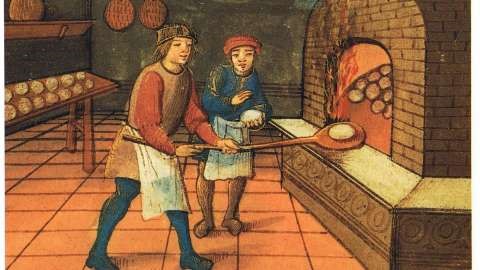Event type:Seminar
Series:Food History
Address:Online- via Zoom
Speakers:Daniel Schiffman (Ariel University)
Event dates:1 December 2022, 5:30PM - 7:30PM
Contact:ihr.events@sas.ac.uk
Email only
In April 1949, the nascent Israeli government imposed rationing and price controls to deal with the challenges of war and mass immigration; bread was not rationed. Minister of Supply Dov Yosef decided to enrich bread with skim milk powder from US agricultural surplus, to ameliorate animal protein, calcium and riboflavin deficiencies. This was problematic in Israel, because the kosher laws restrict the baking of dairy bread to prevent its inadvertent consumption with meat. In May 1949, Yosef compromised with Israel's Chief Rabbinate and introduced 10% milk powder rolls (not loaves). Yosef's experiment failed: The public disliked the milk rolls due to their poor taste and short shelf life, and unscrupulous bakers reduced the milk powder percentage. In December 1950, Pinhas Lavon, who had replaced Yosef, decided to introduce 5% milk powder loaves, despite Yosef's failure and the kosher-acceptable alternative of soy flour enrichment. The Rabbinate objected that milk bread would inevitably be mixed with regular bread in bakeries, and with meat in homes and restaurants. Lavon defied the Rabbinate and introduced milk bread by May 1951. Lavon's experiment failed: Few bakeries baked milk bread because the Rabbinate required separate facilities for it, and the public disliked its taste and problematic kosher status. In March 1952, Yosef, who had replaced Lavon, decided to enrich all standard bread with soy; by May 1953, 2% defatted soy flour was being added. Soy enrichment was delayed because soy flour had to be imported and because policymakers thought that the public would dislike its taste.


